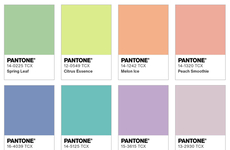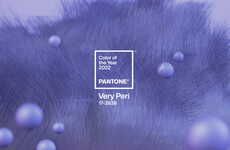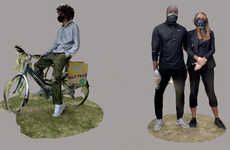
The 'Humanae' Project Breaks Down Racial Identifiers
Cody Turner — July 11, 2012 — Tech
References: pantone & humanae.tumblr
Many terms have been used to define the various skin tones the human species has, but the Humanae project by Angelica Dass breaks down the social barriers of black, white and everything in between.
Spanish artist Angelica Dass has taken it upon herself to categorize every possible skin tone color. She plans to achieve this by photographing numerous people and placing them in front of a background identical to their facial skin tone using the PANTONE® color scheme .
Dass aims to bring to the light the "colors beyond the borders of our codes by referencing the PANTONE® color scheme." For anyone unfamiliar with the PANTONE® color scheme: it was founded in 1963 by Lawrence Herbert to identify and match the many different colors by giving them an alphanumeric code.
The Humanae project forces the audience to reconsider the terms we use to identify skin tone as you can clearly see that those who are normally considered the same, are very much completely different.
Spanish artist Angelica Dass has taken it upon herself to categorize every possible skin tone color. She plans to achieve this by photographing numerous people and placing them in front of a background identical to their facial skin tone using the PANTONE® color scheme .
Dass aims to bring to the light the "colors beyond the borders of our codes by referencing the PANTONE® color scheme." For anyone unfamiliar with the PANTONE® color scheme: it was founded in 1963 by Lawrence Herbert to identify and match the many different colors by giving them an alphanumeric code.
The Humanae project forces the audience to reconsider the terms we use to identify skin tone as you can clearly see that those who are normally considered the same, are very much completely different.
Trend Themes
1. Skin Tone Diversity - The Humanae project has categorized every possible skin tone color and is forcing people to reconsider the terms used to identify skin tones.
2. PANTONE® Color Scheme Integration - Angelica Dass has used the PANTONE® color scheme to match the various skin tones of people photographed for the Humanae project.
3. Visual Representation of Diversity - The Humanae project provides a visual representation of the diversity of human skin tones and challenges social barriers.
Industry Implications
1. Fashion Industry - The fashion industry can benefit from using a wider range of skin tones in their advertisements and brand campaigns, as inspired by the Humanae project.
2. Beauty Industry - The beauty industry can create more inclusive product lines and marketing campaigns that represent all skin tones, as inspired by the Humanae project.
3. Photography Industry - The photography industry can incorporate the PANTONE® color scheme to accurately represent the diversity of human skin tones in their work, as inspired by the Humanae project.
5.7
Score
Popularity
Activity
Freshness























